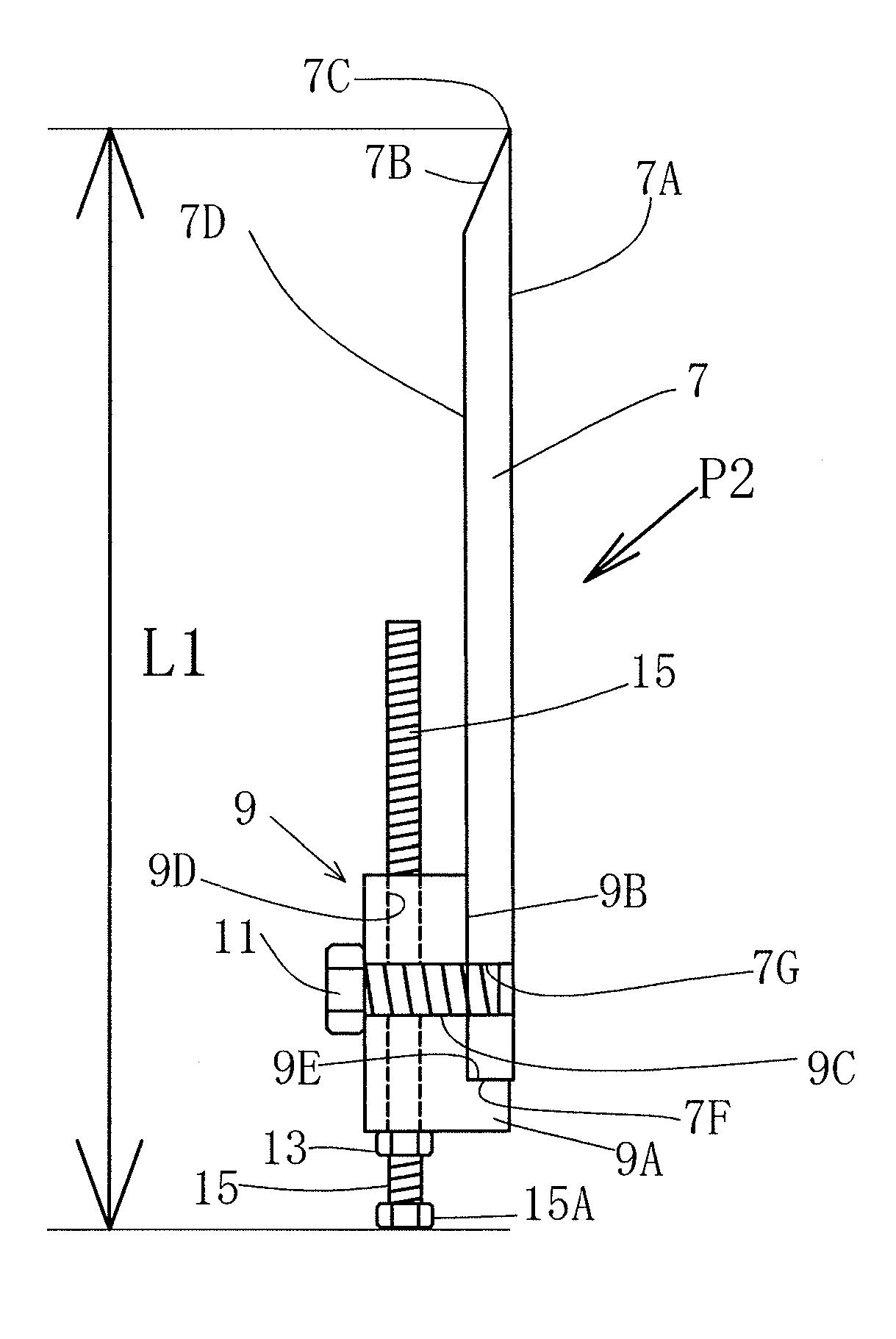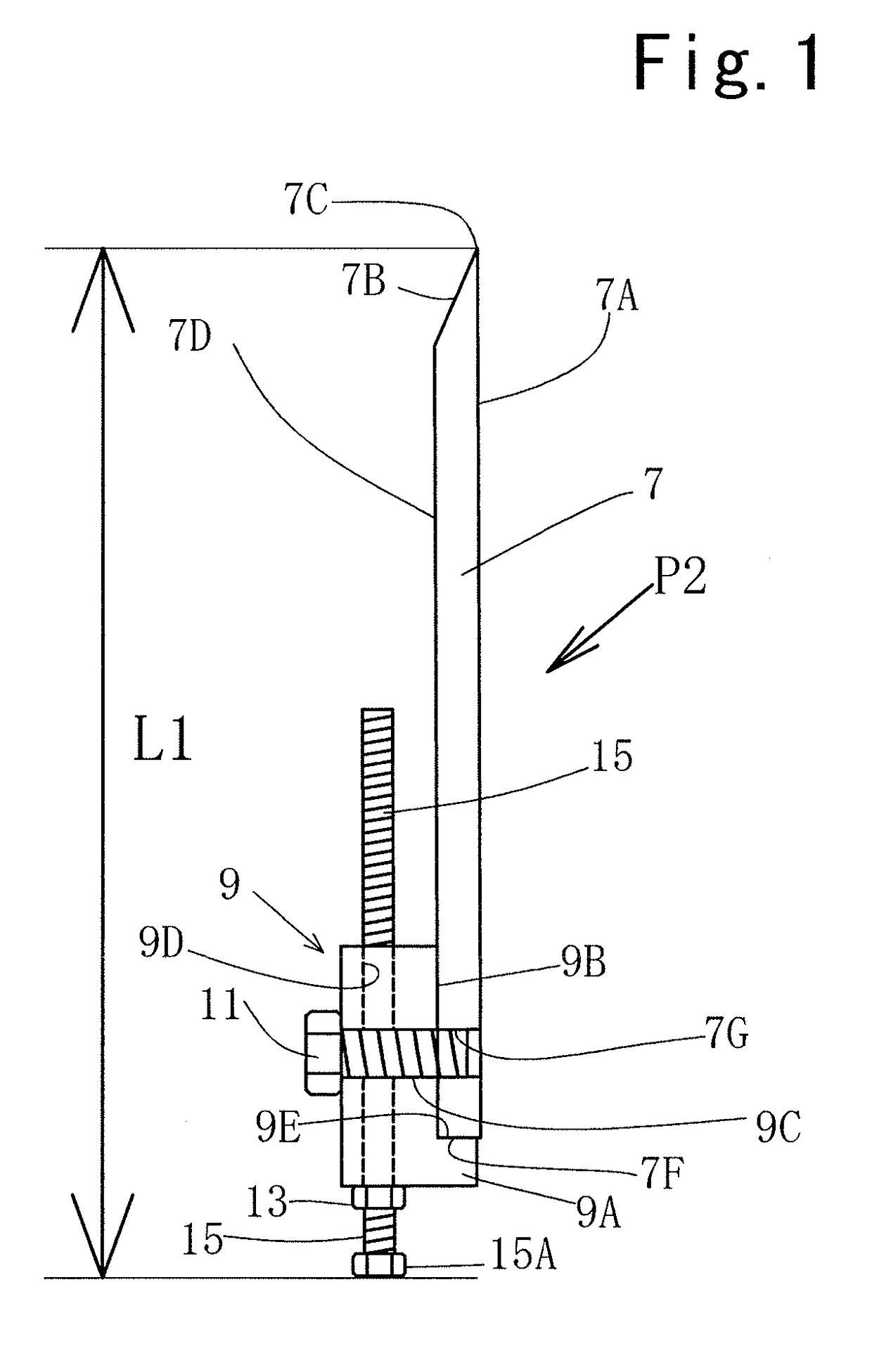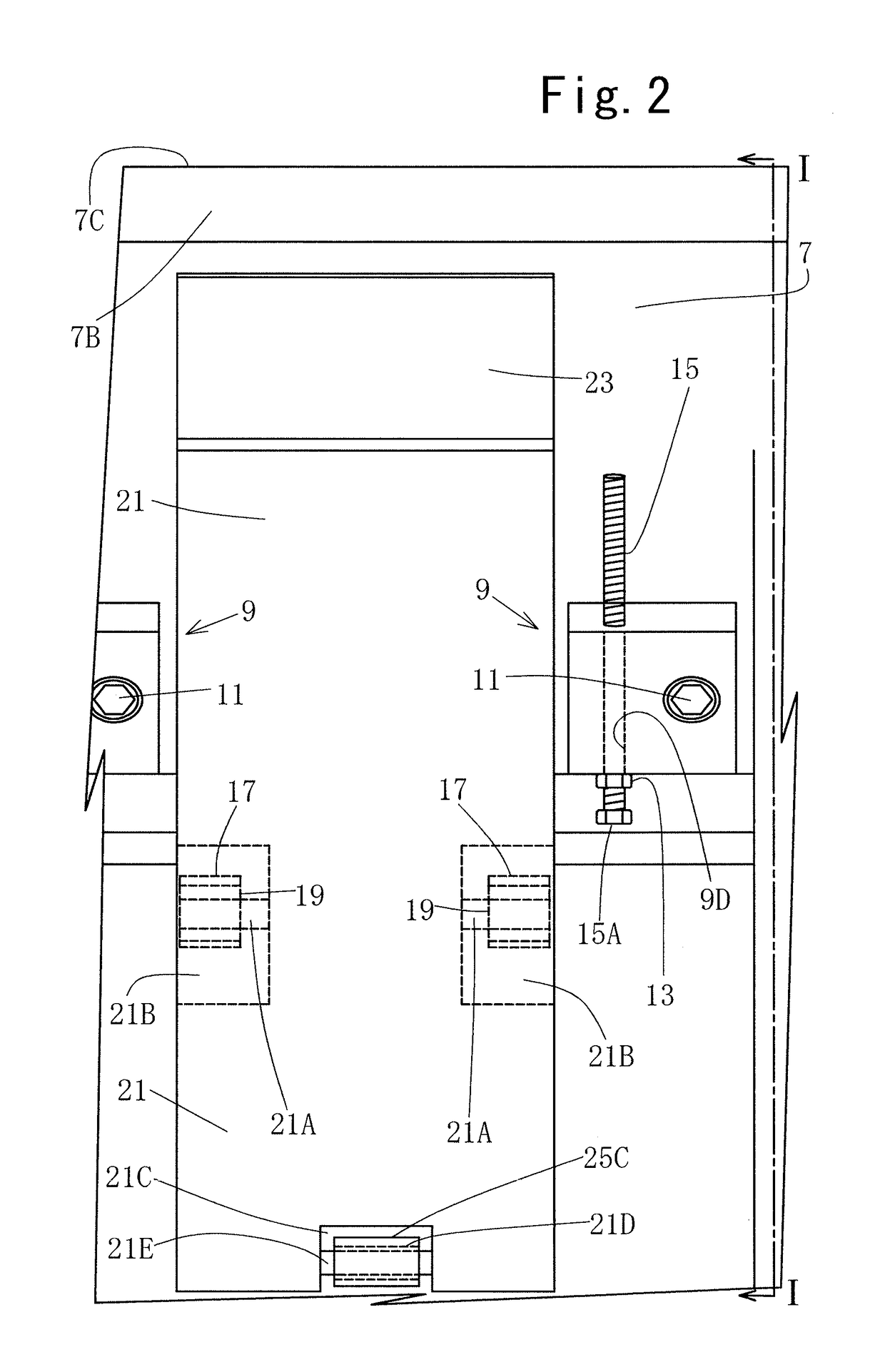Knife assembly
a knife and assembly technology, applied in the field of knife assembly, can solve the problems of weighing hundreds of kilograms, and causing hazardous situations, and achieve the effects of reducing the weight of the knife blade, reducing the risk of injury, and reducing the effective thickness of the knife blad
- Summary
- Abstract
- Description
- Claims
- Application Information
AI Technical Summary
Benefits of technology
Problems solved by technology
Method used
Image
Examples
first embodiment
[0030]The following will describe a knife assembly according to the present invention with reference to FIGS. 1 through 6. It is noted that the knife assembly according to the embodiments of the invention is of a type that is applicable to a rotary veneer lathe.
[0031]Referring to FIG. 1, there is shown a knife assembly P2 according to the first embodiment of the present invention. The knife assembly P2 includes a knife blade 7, a plurality of knife blade holders 9 (only one holder shown in the drawing) and a knife height adjusting bolt 15 with a lock nut 13. The knife blade 7 has a first surface 7D and a second surface 7A formed across the thickness of the knife blade 7 and extending parallel to each other, a bevel surface 7B formed on the first surface 7D side of the knife blade 7, a cutting edge 7C formed by the second surface 7A and the bevel surface 7B, and a base end surface 7F extending opposite from and parallel to the cutting edge 7C. The knife blade 7 has a length or the di...
second embodiment
[0041]a knife assembly according to the present invention will now be described with reference to FIGS. 7 through 10. Coordinate axes L, H and T appear in FIGS. 7, 8 and 9, wherein L represents the longitudinal direction, H the height direction and T the thickness direction of the knife blade 37, respectively.
[0042]Referring firstly to FIG. 7, there is shown in perspective view a knife blade holder 30 for a knife assembly P3 (FIGS. 9 and 10) of the second embodiment. The knife blade holder 30 includes a holder block 31 having therein a cutout void portion and a bolt adjusting bolt 35. Specifically, the holder block 31 is generally of a cuboid shape having formed therein a cutout void portion in the form of a recess 31A having three adjoining surfaces 31D, 31F and 31G. The surface 31F has a height L3 and a length L4 and extends parallel to the first surface 37D of the knife blade 37 when the holder block 31 and the knife blade 37 are assembled together into the knife assembly P3 show...
PUM
 Login to View More
Login to View More Abstract
Description
Claims
Application Information
 Login to View More
Login to View More - R&D
- Intellectual Property
- Life Sciences
- Materials
- Tech Scout
- Unparalleled Data Quality
- Higher Quality Content
- 60% Fewer Hallucinations
Browse by: Latest US Patents, China's latest patents, Technical Efficacy Thesaurus, Application Domain, Technology Topic, Popular Technical Reports.
© 2025 PatSnap. All rights reserved.Legal|Privacy policy|Modern Slavery Act Transparency Statement|Sitemap|About US| Contact US: help@patsnap.com



